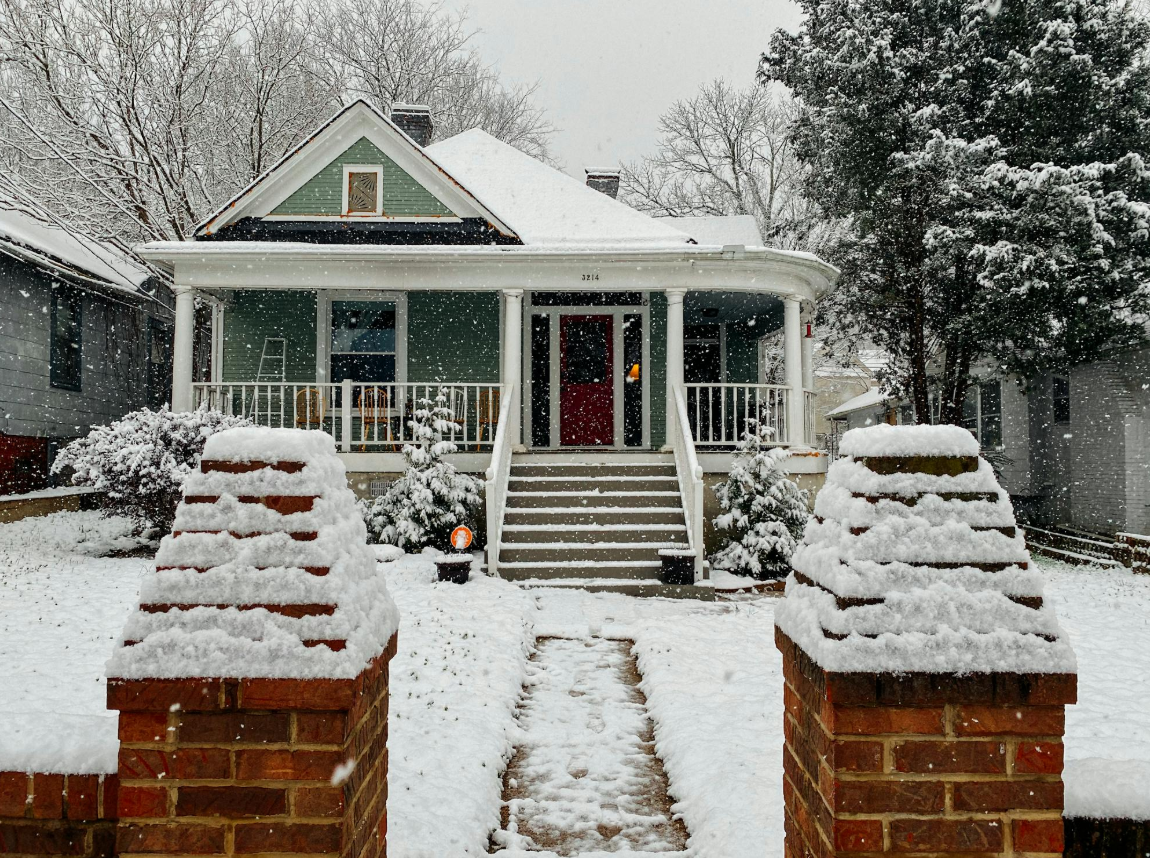
The blanket of snow and icicles that the winter storm leaves might look pretty. But winter storms can be harsh. Howling winds, relentless snow, and freezing temperatures can leave your home looking like it’s been through a battle.
Broken windows, a leaky roof, and maybe even some water damage—it is easy to feel overwhelmed when facing a storm. But don’t panic. Here, we’ll walk you through some practical tips that will help you get things back in order.
You might be fired up to start cleaning up after that crazy winter storm. But hold your horses.
Winter storms can leave behind damage you don’t notice at first glance. It’s not just about the broken windows or missing shingles. Rather, it’s the sneaky issues hiding in places you don’t often look.
Storms can push water into unexpected corners. This can lead to hidden mold growth, which can be a major health hazard.
According to Cal OES News, mold can grow in areas that experience high amounts of water, such as walls. So, check your attic for leaks or water stains.
Basements and crawl spaces are also prime spots for trouble. If they’ve taken on water, you might notice dampness, strange smells, or cracks in the foundation.
Got downed power lines nearby? Stay far away and call the utility company asap. And don’t forget to check for cracks in your foundation or chimney. Storms often mess with those areas as well.
Bankrate informs that ice damming is a common form of winter storm damage. Ice accumulation on the roof prevents water from draining properly. This can cause leaks in your home.
Act fast if water is finding its way into your home. Else, the damage will escalate.
Tarping is a quick, easy way to stop the leaks while you wait for professional repairs. Grab a heavy-duty, waterproof tarp and secure it tightly over any affected areas.
However, make sure to overlap the tarp with undamaged parts of your roof. This will keep the weather out.
Use roofing nails or screws to secure the tarp. Along the tarp’s edges, use a piece of wood or battens. That will create extra stability. The tarp won’t flap or tear when the wind picks up again—after all, winter storms are rarely a one-and-done deal.
Storm debris like ice, leaves, and branches can clog the gutters. Blocked gutters will cause water to pool around your home’s foundation or cause ice dams.
If the gutters are filled with ice, don’t just start hacking away with a shovel. Knocking icicles off a gutter can lead to cracks, especially if it’s a plastic one, warns Homes & Gardens.
Instead, flush your gutters with warm water. This will melt any ice buildup while pushing out hidden blockages.
Don’t stop there. Check your gutters for cracks, sagging sections, or areas pulling away from the roof. If you spot damage, call in a professional.
For residents of Greenville, South Carolina, this is particularly important. Just this week, meteorologists have predicted that the city could get a winter storm with two to four inches of snow. This snowfall can weigh down the gutters, causing them to bend, detach, or break.
If that happens, reach out to local gutter installers in Greenville, SC. They can replace damaged gutters or install more durable, weather-resistant systems to keep your home protected through the harshest storms.
Finding professional gutter installers is challenging. To help you out, SureFlow Gutters lists what separates the pros from the not-so-pros. That includes proper licensing and insurance, hands-on experience, and a solid reputation. Focus on these factors, and you’ll choose the best gutter installation contractor.
Snow, ice, and freezing temperatures make your deck look worn and weathered. You can bring it back to life, however.
Clear off any lingering snow, leaves, or branches. Use a plastic shovel or a soft broom to avoid scratching the surface.
Next, check for damage. Look for warped boards, popped nails, or cracked wood. Replace any damaged planks, and hammer down loose nails or screws. Don’t forget to check for signs of rot, especially in areas close to the ground or where snow piled up.
For water damage or discoloration, a wood cleaner or brightener can help restore your deck’s natural color. When all’s done, apply a water-resistant sealant or wood stain to protect your deck from future storms.
Dealing with storm damage can be stressful. But you can get your home back to normal in no time by taking things one step at a time.
Don’t dive in and try to fix everything as quickly as possible. Rushing repairs can lead to costly mistakes—or worse, injuries. Take the time to assess, document, and plan your next steps carefully. And while DIY repairs are great for some tasks, don’t hesitate to call in the pros for the big stuff.
Before long, you’ll have your home safe, secure, and storm-proofed for whatever Mother Nature throws your way next.